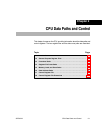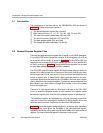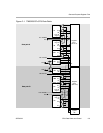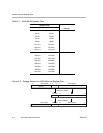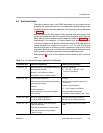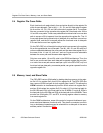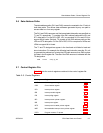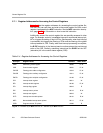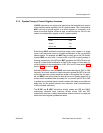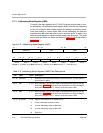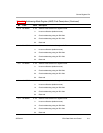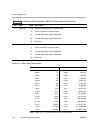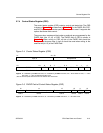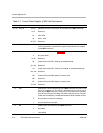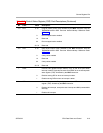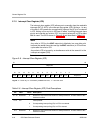
Control Register File
2-9CPU Data Paths and ControlSPRU733
2.7.2 Pipeline/Timing of Control Register Accesses
All MVC instructions are single-cycle instructions that complete their access
of the explicitly named registers in the E1 pipeline phase. This is true whether
MVC is moving a general register to a control register, or conversely. In all
cases, the source register content is read, moved through the .S2 unit, and
written to the destination register in the E1 pipeline phase.
Pipeline Stage E1
Read src2
Written dst
Unit in use
.S2
Even though MVC modifies the particular target control register in a single
cycle, it can take extra clocks to complete modification of the non-explicitly
named register. For example, the MVC cannot modify bits in the IFR directly.
Instead, MVC can only write 1’s into the ISR or the ICR to specify setting or
clearing, respectively, of the IFR bits. MVC completes this ISR/ICR write in a
single (E1) cycle but the modification of the IFR bits occurs one clock later. For
more information on the manipulation of ISR, ICR, and IFR, see section 2.7.9,
section 2.7.5, and section 2.7.7.
Saturating instructions, such as SADD, set the saturation flag bit (SAT) in CSR
indirectly. As a result, several of these instructions update the SAT bit one full
clock cycle after their primary results are written to the register file. For exam-
ple, the SMPY instruction writes its result at the end of pipeline stage E2; its
primary result is available after one delay slot. In contrast, the SAT bit in CSR
is updated one cycle later than the result is written; this update occurs after two
delay slots. (For the specific behavior of an instruction, refer to the description
of that individual instruction).
The B IRP and B NRP instructions directly update the GIE and NMIE,
respectively. Because these branches directly modify CSR and IER,
respectively, there are no delay slots between when the branch is issued and
when the control register updates take effect.



